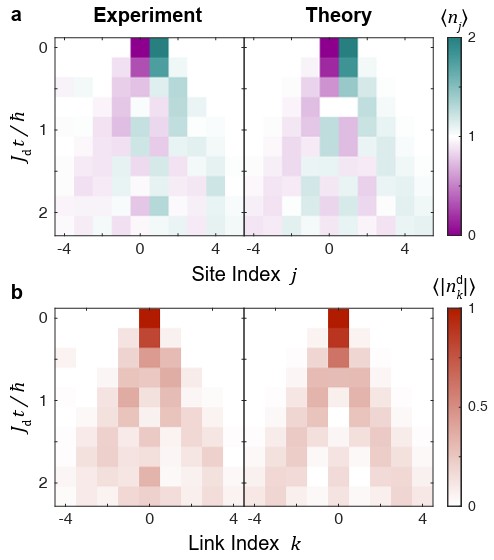Rubidium Lab
Multi-Particle Quantum Walks in a Dipole-Conserving Bose-Hubbard Model
arXiv:2511.02343
When particles move through a crystal or optical lattice, their motion can sometimes become frozen by strong external forces – yet collective motion may still emerge through subtle many-body effects. In this work, we explore such constrained dynamics by realizing a dipole-conserving Bose-Hubbard model, where single atoms are immobile but pairs of particles can move cooperatively while preserving the system’s center of mass, i.e. the overall dipole moment of the particle distribution. Starting from a one-dimensional chain of ultracold bosonic atoms in an optical lattice, we generate localized dipole excitations consisting of a hole and a doublon using site-resolved optical potentials and characterize their quantum walks and scattering dynamics. Our study provides a bottom-up investigation of a Hamiltonian with kinetic constraints, and paves the way for exploring low-energy phases of fractonic matter in existing experimental platforms.